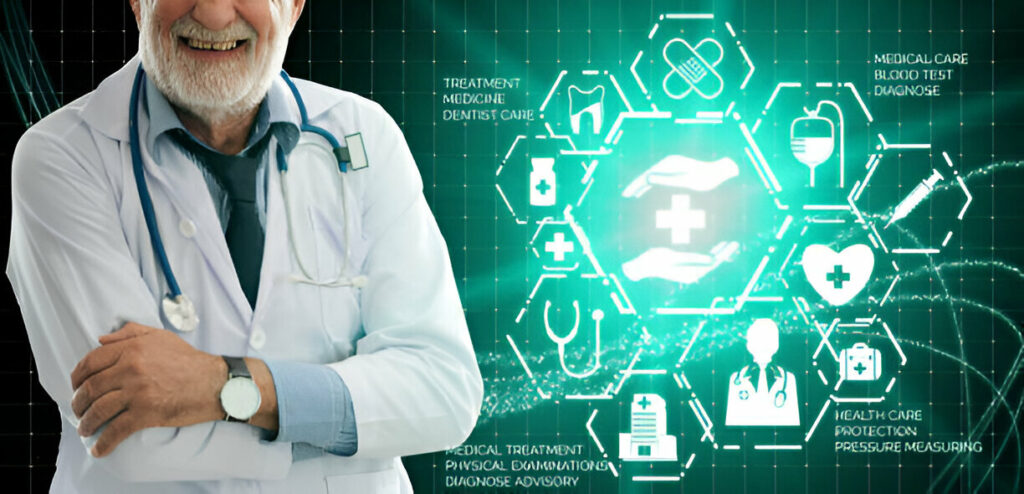As the elderly population grows, protecting their sensitive medical information has become more important than ever. Blockchain in elder care data security introduces a reliable solution for safeguarding patient records, improving collaboration among caregivers, and giving seniors control over their health data. In fact, while it might sound highly technical, blockchain offers practical benefits for the real world of elder care.

What Is Blockchain, and Why Does It Matter?
To begin with, blockchain is a digital ledger that stores information across a decentralized network. Instead of using a single server, it distributes data across many computers. Each new entry creates a time-stamped “block” of data that is linked to the previous one, forming a secure chain that cannot be changed without detection.
Consequently, because of this structure, it becomes almost impossible to manipulate or delete information. Therefore, this feature makes blockchain ideal for managing medical records, especially when accuracy and trust are essential.
Why Elder Care Needs Better Data Security
Caring for older adults involves many people—doctors, nurses, home aides, family members, and insurance companies. As a result, when so many hands touch one file, the risk of mistakes or data leaks increases. Even worse, a small error in medication history can result in serious health issues. Furthermore, elderly people often fall victim to identity theft and medical fraud.
Clearly, stronger data security is a must. Fortunately, blockchain provides a safer, more transparent way to manage and protect sensitive information.
How Blockchain Helps Protect Elder Care Data
Let’s break down how this technology supports elder care:
1. Ensures Privacy
Each participant in the system gets permission-based access. In other words, seniors decide who sees their records, and every access attempt is tracked. Moreover, because of encryption, even if someone tries to hack the system, the data remains unreadable without proper authorization.
2. Improves Accuracy
Once data is entered into the blockchain, no one can alter it without creating a record of the change. Thus, this eliminates tampering and ensures medical histories remain consistent and trustworthy.
3. Enhances Collaboration
Doctors, specialists, and caregivers can see the same up-to-date records. As a result, decisions are better informed and more consistent across the care team.
4. Reduces Fraud
Blockchain’s transparency makes it easier to detect false claims and unauthorized activity. Notably, every transaction has a digital fingerprint, helping to expose fraud quickly.
Real-World Examples of Blockchain in Elder Care
Many health systems and startups have already started using blockchain to improve elder care. For example:
- Estonia’s eHealth Authority uses blockchain to manage national health records.
- IBM partners with healthcare providers to build blockchain-based data exchange systems.
- HIMSS supports blockchain adoption to promote secure patient data sharing across providers.
These examples show that blockchain is more than theory—it’s already creating real impact in elder health data management.
What Challenges Still Exist?
Despite the benefits, implementing blockchain does require effort. To clarify, the upfront investment in technology and training can be expensive. In addition, healthcare staff need time to learn how to use these new systems correctly. Finally, interoperability is key. In order for the system to work effectively, many providers must adopt compatible platforms.
Nevertheless, the long-term gains in privacy, efficiency, and patient trust make blockchain a smart investment.
How to Begin Using Blockchain in Elder Care
Organizations interested in adopting blockchain should take these steps:

- First, start with education—Train healthcare providers and administrative teams about how blockchain works.
- Next, collaborate with technology partners who specialize in health tech.
- Then, test the system through pilot programs before full rollout.
- Lastly, ensure compliance with data regulations like HIPAA to protect patient rights.
By following these steps, elder care facilities can move confidently into a more secure digital future.
Conclusion: A New Era in Data Security for Seniors
All things considered, blockchain in elder care data security gives seniors and their caregivers a reliable way to manage health records. It builds trust, prevents fraud, and supports better medical decisions. Ultimately, as more healthcare providers adopt this technology, elder care will become safer, more efficient, and more personalized.
READ MORE
Are you ready to ensure your loved ones receive the best care at home? Stay informed and join our community support forum to receive the latest tips on elder care:
Conclusion: The Future is Secure with Blockchain
While blockchain is not a cure-all, its integration into elder care data management is a game-changer. Ultimately, the goal is to restore privacy, build trust, and ensure the well-being of our aging population. With the right strategy, blockchain elder care security can become the new standard for safer, smarter healthcare delivery.
Disclaimer The information provided in this blog post is for educational and informational purposes only and should not be construed as professional medical, legal, or technological advice. While every effort has been made to ensure the accuracy of the content, blockchain technology and healthcare regulations are evolving fields, and readers are encouraged to consult qualified professionals or legal advisors before making decisions based on the information presented.are encouraged to consult qualified professionals or legal advisors before making decisions based on the information presented.
Always, to my Beloved Parents:
Everyday-
I think of you
I miss you
I Love You ❤️

Recent Comments